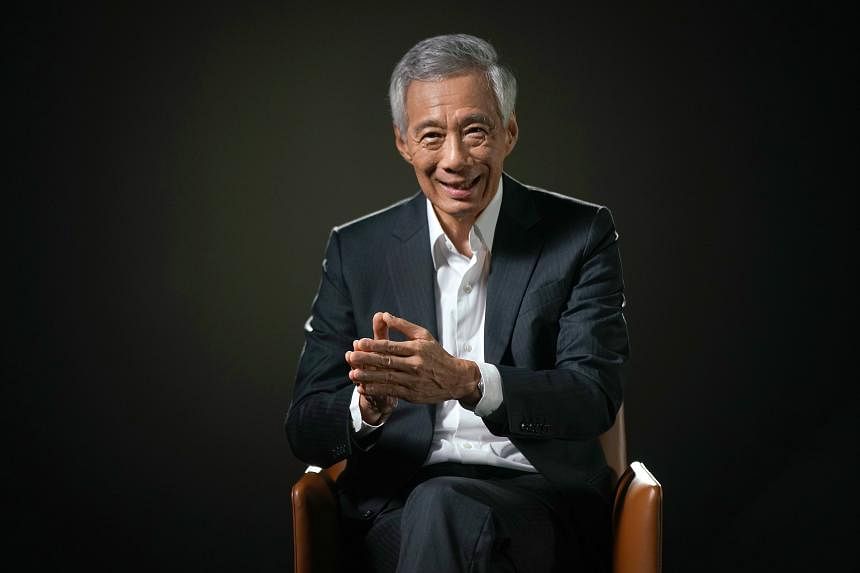SINGAPORE - Singapore’s reserves cannot be built up again once they are gone, Prime Minister Lee Hsien Loong said in an interview published on Wednesday.
The country is no longer in a situation like it was in the 1970s and early 80s. This was when it had strong growth and budget surpluses yearly, and there was the possibility of putting aside some of the prosperity for a future rainy day, he said.
Today, Singapore is not as poor as it was before, with higher incomes and a higher standard of living. But expectations and needs have also grown, noted PM Lee.
“So, to say today you put aside systematically 2 per cent, 3 per cent of GDP (gross domestic product) and build up a sovereign fund from scratch, I think it is very hard. The economy will not be able to take it,” he said.
PM Lee said he was proud that Singapore had built up the reserves, and is anxious that the country keeps it like this for as long as it can.
“Because it is one of those things – once it is gone, it will never come back again. It is finished,” he said.
“I think we need to be very, very conscious that this is a Garden of Eden state. You are here, it is marvellous. You may not always feel great, but please be aware this is the Garden of Eden because if you come out from it, you cannot go back in again by the sweat of your brow.”
PM Lee was responding to questions on Singapore’s reserves, including its functions and its history, in an interview with national broadcaster CNA that was aired on Wednesday in a documentary titled Singapore Reserves Revealed. The interview was conducted on June 8.
When asked what the reserves mean to him, PM Lee said they are a great source of comfort and reassurance that if Singapore runs into a jam, it will not be destitute and will have “one extra card to play”.
It gives the Government confidence, but is also a reminder of the forefathers’ contributions and a responsibility to generations to come, he added.
Singapore’s reserves are managed by the Monetary Authority of Singapore (MAS), the Republic’s investment company Temasek and sovereign wealth fund GIC.
The reserves also include those of key statutory boards like the Housing Board, Central Provident Fund and JTC Corporation, which together with MAS, GIC and Temasek are listed in the Constitution as Fifth Schedule entities.
Are the reserves enough?
PM Lee said that the biggest misconception among Singaporeans on the reserves was that “there is such (a) thing as enough”.
“And how much is enough? If I have more than that, I can spend it. If I have less than that, well, maybe I hope to get there. I do not know how much is enough. There is no such idea of how much is enough,” he said.
The future is unpredictable and many things can go wrong, he added.
“From the long-term point of view, will I have enough if the world is steady and peaceful? I hope so. Will I have enough under all circumstances? That is what I do not know, and that is what the Government has to worry about on behalf of Singaporeans.”
He noted that when the global financial crisis of 2008 hit, the Government needed to draw $4 billion to $5 billion from the reserves. For the Covid-19 crisis, it needed over $40 billion.
“So, you have no idea how much you will need because Covid-19 is far from the worst thing that can happen to us,” he said.
He suggested that Singaporeans look at the reserves as “rainy-day money”.
“If it is not raining, I do not touch it. If it is a sunny day and I can afford to, I put a little bit more into it.
“However much there is, I keep on having this attitude that I would like to build it up a little bit more when I can, so that the next generation will be in a more secure position than I am today,” he said.
PM Lee added that while the Government managed to put back the money it drew for the global financial crisis, he did not think it was possible for the Covid-19 draws to be put back.

When asked if there was any anxiety over Singapore’s response to the Covid-19 crisis, PM Lee said he had no doubt that the Government was doing the right thing, and it was doing what it needed to do.
“I was relieved that we were not held back because of the lack of resources to do, at least not lack of dollars, to do what we needed to do.
“It could have been overdone, but in such situations, it is not worth trying to fine-tune,” he said, adding that the eventual spending was less than expected, though still substantial.
When asked how large the reserves are, PM Lee said he could not answer the question, but said they are “enough for most circumstances” and enough to provide a substantial support in the Budget every year, by contributing to a fifth of the Government’s revenues.
“But it may or may not be enough if you have a catastrophe – who knows what the world will bring? So, I do not ask whether it is enough; I ask, can we husband it and if possible, gradually grow it bit by bit year by year,” he said.
He noted the importance of the contributions from the reserves to Singapore’s Budget, without which the Government might have to make up the revenue from other sources, such as doubling corporate income tax or personal income tax, or increasing the goods and services tax rate further.
“When people say, why don’t we use the reserves in order to benefit the current generation? The answer – we are, to a very big degree. But you may not realise because we have gotten used to it,” he said.
When asked if the structure of having MAS, Temasek and GIC overseeing the reserves is correct and useful in today’s context, PM Lee said that from time to time, the Government has asked itself if it should have two GICs.
“Because you have a certain amount of funds now, it is not small. Conceivably, you could have two and they could compete with one another, then you would know who is doing well and who is not doing so well,” he said.
“Every few years we argue about this, but finally we will conclude that building one team is hard enough, let us concentrate on making that one team succeed. And I think we keep it like that.”
The elected president
On the singular pivotal moment in the history of Singapore’s reserves, PM Lee pointed to the time when the Government decided to recognise the reserves as being a lot of money, and needing to have a second key.
The idea was first floated by former prime minister Lee Kuan Yew in his 1984 National Day Rally speech, before the scheme was worked out and implemented over the next few years.
“I think that was the key turning point because it crystallised people’s focus. They knew that there is such a thing called the reserves, that it is quite a lot of money and that it needs to be protected,” said PM Lee.
When drafting the system, it was important to protect the reserves but not paralyse the government of the day, noted PM Lee.
He noted a phrase used by the late Mr Lee on the topic.
“The phrase which he used was that one day, if you have a rogue government, everything is finished.
“That was the way we explained and marketed it, that one day, if you have a freak election, you have the wrong team in charge, you have a rogue government who wants to raid the reserves, in one term, all your life savings of generations of Singaporeans will be gone. And therefore, we must prevent that,” said PM Lee.
He also noted that when the system of the elected presidency was first devised, there was no clear distinction in the original legislation between income from the reserves and investment returns.
In those days, the portfolio was not invested as systematically and comprehensively as it is today. The premise then was that the principal sum would be locked up, and all of the income from the reserves could be spent.

PM Lee said that when former president Ong Teng Cheong took on the role, Mr Ong asked why all the income was being spent, and asked the Government to set some aside for the future.
Mr Ong then suggested that half be split for now, and the other half for the future.
The Government accepted the suggestion and amended the Constitution.
There was an arbitrariness to the decision of the 50-50 split, said PM Lee.
“But when you do deals, 50 per cent is not an arbitrary number. Fifty per cent has a certain psychological resonance to it,” he said.
At the same time, barring accidents and if everything goes well, the reserves should be able to grow by about 2 per cent yearly.
This will ensure the contribution to the Budget every year can be maintained, said PM Lee.
The Net Investment Returns Contribution (NIRC), which comes from the reserves, is the largest contributor to the Government’s revenue yearly.
When asked about potential scenarios where the 50-50 rule could be changed, PM Lee replied: “If the world completely changed, and I would say several successors from me, from now.”
He added: “Where we are does not give me any reason to need to reconsider this 50-50 NIRC rule.”


